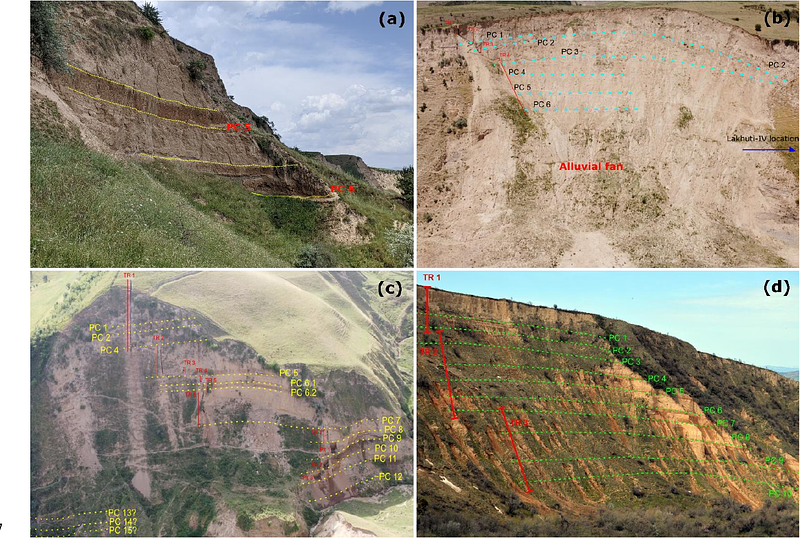Stable isotopes of soil provide insights into hominin paleoenvironments in the Khovaling Loess Plateau of Southern Tajikistan, Central Asia

Stable isotopes of soil provide insights into hominin paleoenvironments in the Khovaling Loess Plateau of Southern Tajikistan, Central Asia
Chirakkal, A.; Kulakova, E.; Birk, J.; Anoikin, A.; Kurbanov, R.; Sosin, P.; Shu, P.; Wright, D. K.
AbstractHere, we present the first soil isotopic record in association with Paleolithic occupations in the Khovaling Loess Plateau of Southern Tajikistan, Central Asia. This region has been the focus of numerous archaeological projects since Soviet times as it contains evidence of some of the oldest (~0.9 Ma) hominin occupations in Central Asia and is one of the key regions connecting eastern Asia to centers of hominin evolution that lie to the west. Previous archaeological surveys discovered rich collections of lithic artifacts concentrated in pedocomplexes (PCs) 4, 5, and 6 formed in eolian deposits corresponding to Marine Isotope Stages (MIS) 11 (364_427 ka), MIS 13 (474_528 ka), and MIS 15 (563_621 ka), respectively, from many loess-paleosol locales, such as Karatau, Lakhuti, Obi-Mazar, and others. Here, we use the soil organic matter stable carbon ([Delta]13C) and nitrogen ([Delta]15N) together with soil total organic carbon (TOC) and total nitrogen (TN) contents at four distinct landscape aspects relative to archaeological materials: on-site, sparse on-site, near-site, and off-site based archaeological findings in Khovaling loess record. Our results reveal that on-site locations are characterized by elevated [Delta]15N values and depleted [Delta]13C values indicating intensive human occupation and reliance on C3 vegetation, indicative of cooler and wetter climate conditions. These findings are corroborated by the high concentrations of lithic artifacts at these locations, suggesting repeated episodes of human activity and possible landscape management compared to other locations. In contrast, near-site and off-site locations exhibit lower [Delta]15N values and higher [Delta]13C values with fewer or no lithic artifacts indicating less intensive human use and a shift towards more grassier vegetation and more open land cover conditions. This study highlights the significant role of early humans in shaping their environments, contributing to a deeper understanding of subsistence strategies and environmental adaptations during the Middle Pleistocene. Our findings highlight the importance of integrating isotopic data with archaeological evidence to reconstruct past human impacts on the landscape.